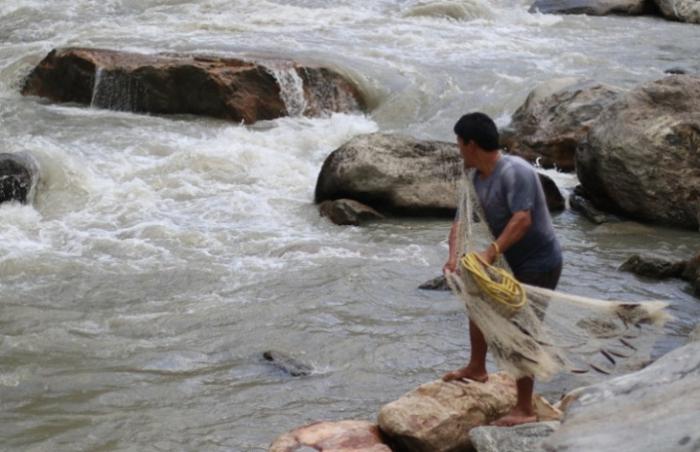Tandin Wangchuk
To study the fresh water fish diversity of one of the river basin in Bhutan and create awareness on the importance of conserving the existing freshwater fishes for sustainable use.

Cast net throw is the main technique applied to collect the data.
Several studies on fresh water fishes have been conducted in Bhutan. However, most of these studies have focused in the southern and central part of the country, leaving the northern and eastern fish diversity and its ecology largely unexplored. The northern and eastern part of the country have also been seeing increase in human settlements and other development activities due to government policy of balanced development approach unlike in the past few decades where the development activities were mostly concentrated in the southern and western part of the country. Thus, a need is being felt to conduct a detail study to assess on the existing fish diversity and the impact of these increased settlements and development activities in some selected fresh water river system in the northern and eastern part of the country.
The proposed study will be conducted in one of the river basin i.e Gamri chhu in eastern part of the country which stretches along the six counties. People in two counties which is basically located at the source of the proposed river system, people are totally dependent on livestock rearing. Approximately, 80 % of these people practised traditional grazing system directly impacting on the river and other wild life ecosystem. Therefore, these two counties lie under one of the country’s protected areas-Sakteng Wildlife sanctuary. The whole river basin touching the six counties will be divided into 100 altitude range and fish diversity data will be collected through random sampling for two seasons, i.e. summer and winter seasons along with water samples to correlate the fish habitat with the fish diversity. A survey questionnaires will be used to assess the level of knowledge among all people of the two counties at the source and within a range of 200 meters from the river basin in the lower four counties. The information so generated shall be subsequently used for creating awareness to these people and other stake holders. Subsequently, the results shall be used to institute PES system such as grazing land ownership rights to people of the two counties at the river source.
In brief, the results of the proposed study is expected to generate baseline data and impacts of increased human activities on river ecosystem which will serve as a reference note for policy makers to initiate similar studies in other unexplored fresh water rivers of Bhutan.